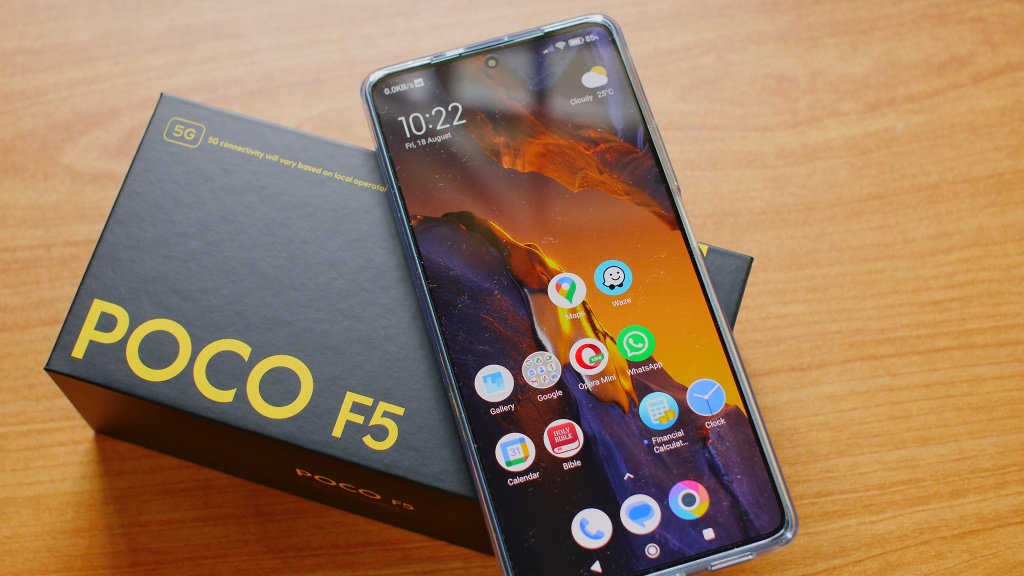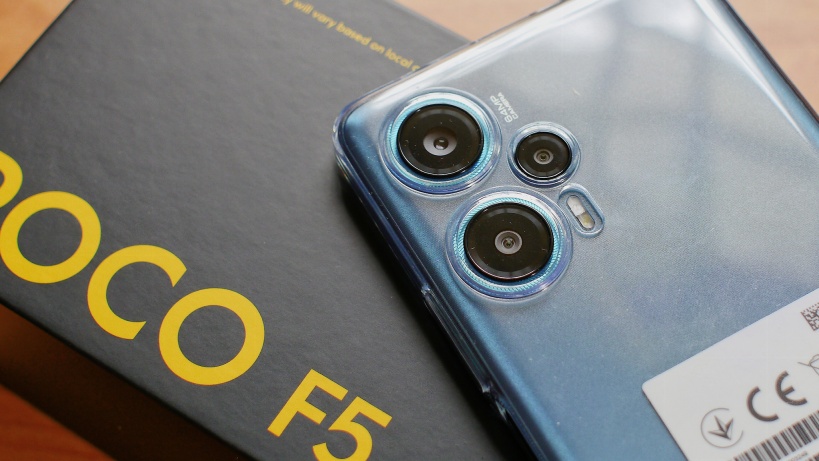My old phone was starting to show its age so I went on a hunt for a new smartphone and finally settled for the Poco F5.
But why the Poco F5 and not something else? Read along and find out.
First up, if your country does not sell the Poco F5, it may be branded as Redmi Note 12 Turbo. There’s a slightly better version called the F5 Pro which is actually a rebranded Redmi K60.

Unlike a few years ago where prices were dropping while features and quality were going up, the pandemic, lack of chips have led to high prices yet features that were cut.
Many phones that were 1 or 2 years older had better camera. Some even have better processors. I can buy an older model.
However, the downside is when an Android version gets too old, eventually banking and other financial apps do not work anymore. I faced that with the old phone.
So, it is in my interest to get a phone with the latest Android flavor while not paying too much of a less capable hardware.
Before you say, “why not an iPhone?”, truth of the matter is, I’ve never used Apple products.
I’m comfortable with non-Apple ecosystem. Plus, I’m also play tech support for people at home. It’s best not to add another system into the mix but I digress.
Why Not A Samsung?
I didn’t want to get a Samsung because at the price the price point, the options will lean towards entry level models. Samsung phones tend to have good cameras and screen but reduced specifications on other areas.
With a budget of around US$300, I shortlisted 2 Android phones. One was the Realme 11 Pro and the other was the Poco F5.
Prior to this, I was using an Honor 5c which has served me well since 2017. The phone still works despite dropping in many times.
Within my family members have a total of 3 Honor 5c and all of them still work although are retired due to age. Huawei or Honor do have good quality phones until Huawei got shut out from Google Apps.
I wanted to spend less on a smartphone but eventually decided to pay a bit more for a slightly better camera. This is will be the focus of this review.
Some Tech Specifications
Here are the specifications for the Poco F5. I got the one with 8 GB of RAM and 256 GB storage. It has a Snapdragon® 7+ Gen 2 processor, 120Hz AMOLED screen and a 64MP triple camera with OIS.

More about the camera further down this article.
You can get one with 12 GB RAM but the storage is the same at 256 GB. And you cannot use a SD card to increase storage for either models. Both the standard F5 and F5 Pro have dual standby sim though.
There is also a Poco F5 Pro so do not be confused. The Pro version has a better processor and wireless charging and cost a bit more. Features that I don’t really need.
Camera Specifications
These are the rear camera specifications. Since I’m going to use it more for video recording the rear camera can record 4K 3840 × 2160 @30fps, 1920×1080 @30fps and 60fps, and finally 280×720 @ 30fps.
Although the camera boasts of optical image stabilization, it is only for photos. There is electronic image stabilization, EIS for video at 1920x1080p @30fps with the image slightly cropped in.
So far, I found the EIS decent enough. Off course if there is optical image stabilization, that would be better.
Video Quality
For my use case, these are the results I found using the various cameras.
For recording myself, I found that the front facing camera quality quite decent and exceeded my expectations.
This was surprising to me. I didn’t expect the front camera to hold up well. I found this out by accident while using the front camera to test my composition.
Below is the front camera sample.
I was slightly disappointed with the back camera though. While the photos were okay both indoor and outdoor, the indoor videos looked over sharpened and too high contrast applied.
Out of camera, the video footage looks quite bad. The phone app must have boosted these.
See the sample below.
The clip recorded with the front camera and the back camera were taken a few minutes apart. The time it for me to adjust the tripod. I’m using a mix of ring light and light from 3 windows.
It can be corrected when I edit the video. Below is a color corrected video of the same clip.
I adjusted the brightness and reduced the contrast to get the look. I’d be much happier if I can use the footage without too many adjustments.
Maybe I was expecting a bit too much, but the outdoor footage with the camera is good.
Video sample below 1080p at 30fps. Make sure to choose the best the video quality on the YouTube as YouTube may choose a lower quality to stream.
There’s sufficient detail but off course the darker areas are muddied. A casual viewer won’t notice.
This sample was recorded at 4K 30fps outdoor.
The audio recorded by the built in mics are also decent for indoor use for arm length distances.
Overall Experience
For the price I paid, I’m happy with the Poco F5. The overall experience is smooth and snappy. Perhaps it is still new.
Getting GPS lock is fast, every thing works. There are reports that Xiaomi and the family of phones are not the best when it comes to software.
I do agree to a degree because there are just so many settings you can set.
As you figure them out, it becomes less daunting.
I also bought a selfie stick mini tripod combo to use with the phone. I have to say, the combination is a very good working tool when I do not want to bring a proper camera and tripod on my hikes.
Where I live, I can use near field communication NFC to re-load a toll payment card. The NFC manage to read the toll card quickly.
I’m not sure if this is the same for other types of card or service because that’s the only use case where I live.
The Poco F5, it is available on Amazon (aff link) and if you are in Malaysia, here’s a link to their official Lazada store.
I’m keen to hear your thoughts if you have the Poco F5 or a F5 Pro, or the alter ego the Redmi Note 12 Turbo or Redmi K60.